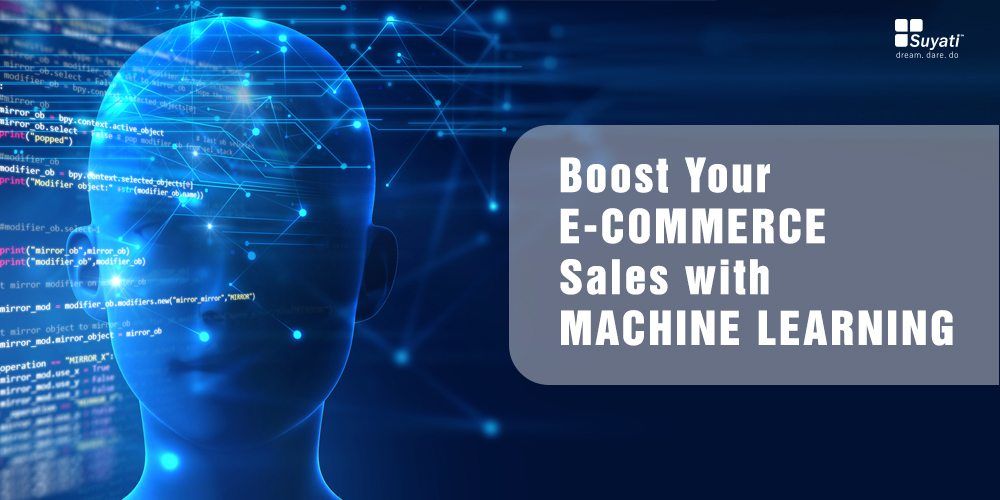Many e-tailers falter in product classification and categorization. They make wrong or vague categorization, resulting in search results throwing up the wrong products, customers not presented with the full list of available products, faulty cross-sell and up-sell recommendations, or personalized engagement turning counter-productive. Such slip-ups lose sales and put off customers. Customers with a bad experience are unlikely to recommend the e-tailer to others.
Hitherto, categorization was manual work, and suffered from a high propensity to errors, time-crunch, and lack of access to relevant information owing to data silos. The application of machine learning technology to e-commerce taxonomy promises a solution to such ills.
Machine Learning Enables Accurate and Fast Categorization
Machine learning powered software builds categories and aids the schema design, classifying each product to its lowest sub-level category, automatically.
Application of the machine learning system triggers a virtuous cycle of the machine and human fueling each other. The human users set base categories. The software powered by machine-learning technologies pull attributes from data sources to populate the taxonomy. The machine “learns” about the products in the category, to cluster similar products into groups, and also suggests new subcategories in the taxonomy. Users intervene only to classify one or two items in each terminal node. The self-learning system groups the category for the remaining products, automatically. When users search for a product, the system applies the category-specific attributes identified for the product, and use it as navigation filters, to throw up a listing of all the relevant products in the category.
The process, free of the errors of manual classification, becomes highly accurate, and the product data highly consistent. There is huge time-saving and productivity boost as well. Group and batch processing overhaul the hitherto one-by-one processing method, making the process faster.
Featured Whitepaper
The system learns with every action, and each new categorization refines the previous action. The humans validate the machine’s action, triggering an iterative process. For instance, initially the machine learning system may only classify products in a product class. However, a year down the line, as it learns from human inputs associated with the product, it would expand in scope and power to identify product relationships.
An important pre-requisite for applying machine learning for taxonomy is robust information architecture (IA) infrastructure. IA organizes the data under-the-hood, ensuring the machine processes the machine-learning commands more effectively, and fast.
Anomaly Detection
Machine learning provides advanced algorithms for automatic anomaly detection. Such algorithms identify patterns, to learn what is “normal,” and trigger alerts on breach of such “normal” ranges.
E-commerce stores already apply anomaly detection in a big way, to detect fraud and identify abusive customers. A common application is to unearth excessive orders made by stolen credit cards. Anomaly detection techniques now find increasing use to ensure high quality of product-related data. E-commerce databases are often rife with errors. Incomplete product titles, missing images, wrong categorization, are all commonplace. Anomaly detection algorithms detect such deficiencies with ease, saving considerable time, money, and effort for the enterprise.
Applying Machine Learning to Personalization
Machine learning based taxonomy improves product data presentation and relationship between products, offering customers the best available choices. But more critically, it offers a viable and powerful mechanism to deliver personalized solutions.
Machine learning software delivers a highly personalized shopping experience to customers. The system learns from previous transactions, and keeps track of the customer’s search and purchase history, to recommend products or categories of interest. The software scours the e-commerce database for products, matching the recent search made by the customer, and brings it in front of the customer, as suggestions.
Enabling such customization requires the effective organization of data behind the machine intelligence. The machine cannot find the relevant data, if the correct path to the data does not exist.
Machine Learning Enables Dynamic Pricing
Dynamic pricing, on the face of it, links prices to demand, increasing prices when demand is high and offering discounts to boost sales during times of low demand. Pricing algorithms, however, are more complex, co-opting various factors such as marketing strategies, customer segmentation to identify target customers for different price points, product categorization based on different levels of pricing, and more. Machine Learning software delivers algorithms, which facilitate such segmentation, and enable dynamic pricing to take effect.
Machine Learning Powers Chatbots
A big new application of machine learning is in chatbots. Of late, e-commerce websites have been applying chatbots, or software conversing with the user through auditory or textual methods, to aid the customer find the product they seek, track order status, and to answer other general queries. Customers get instant and accurate answers, without having to put up with the difficulty of calling and waiting for a live agent attend their call at the customer service.
Hitherto, such automated systems confined itself to a very narrow range of issues. The latest advances in natural language processing and speech recognition enables a more flexible and natural interaction. The latest techniques co-opt contextual information into the analysis, and compare it to frequently occurring patterns, boosting the accuracy of the model. The machine learning based algorithm identify cues from the user’s speech, to compile a list of relevant FAQs or other information, categorized in a customized and relevant order.
Read: Why Chatbots are the future of retail and marketing
The Future Works
The real potential of machine learning come when used along with other technologies. For instance, syncing facial recognition with machine learning makes the entire shopping process seamless. The machine learning technology delves into the customers shopping history, recent searches, interactions or conversations with customers, social media posts, and more, to offer accurate and highly relevant product recommendations.
The possibilities are endless, limited only by imagination. Machine learning has already transformed the foundations of taxonomy. The coming days would see new layers of applications added on the taxonomy, infusing e-commerce with unprecedented dynamism.
Featured Whitepaper
About the Author

S. Karthikeyan, or SK as he is better known, has 19 years of experience in designing, leading and delivering world-class software solutions. His specialties include Product Ideation, Innovation & Strategy, Enterprise & Solution Consulting, Data Science Solutions, and Digital Transformation. As Chief Innovation Officer, SK ensures that experimentation and innovation continues unfettered at Suyati Technologies. He leads the Mekanate team that is developing a Digital Transformation platform using AI, ML, IoT and Big Data technologies. He holds a Masters Degree in Computer Application, and Advanced Certificate in Information Technology Management from IIM, Kozhikode. The opportunity to build technically complex solutions is what runs through his mind all day, and probably keeps him awake at night! Connect with him on LinkedIn.



